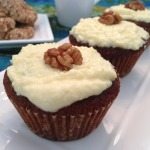Fermented Fish

This is a very easy and nutritious probiotic meal to prepare.
Avoid Farmed Fish
Farmed fish are generally not native to the area and if they escape (which they do) they create disease among native fish, pollute the native species gene pool and compete for food and spawning sites. Some 50,000 salmon are farmed in each tightly confined pen in Tasmania and keeping disease from spreading is a constant battle with the use of antibiotics (which GAPS patients must definitely avoid).
A pilot study conducted by Dr. Easton with the David Suzuki Foundation found that farmed salmon and the feed they were given appeared to have a much higher level of contamination with respect to PCBs, organo-chlorine pesticides, and polybrominated diphenyl ethers than did wild salmon. In January 2004, the journal Science warned that farmed salmon contains 10 times more toxins (PCBs, dioxin, etc.) than wild salmon. In addition to many farmed fish feeds containing soy pellets and pesticide residues, many salmon farmers use a synthetic dye to produce a strong pink flesh cplour.
The best way to buy seafood for GAPS is to catch it yourself or to ask the following questions at your seafood retailer.
• Is the fish farmed ? (avoid all farmed fish)
• Are any additives (like colour enhancers) or preservatives (like sulphites) added? Refer to the Government fact sheet to advise of your request and provide them with a copy (if necessary). Explain why you are making the inquiry and try your best to remain friendly so that you do not offend or make them feel threatened with your questions. It is best to build and maintain a good friendly relationship with your fish market suppliers.
• Ask for fresh chemical and sulphite free crustaceans like prawns (shrimp).

| Prep Time | 25 Mins |
| Passive Time | 3 Days |
| Servings |
Litre jar
|
- 1/2 Cup Whey dripped from yoghurt or kefir
- 3 Whole Fish Herring, Salmon or mackerel (small fatty fish)
- 8 - 10 Whole Perpper corns Crushed or whole (own preference)
- 1/4 White onion Sliced pieces (optional)
- 1/2 Tsp Coriander seeds
- 1/2 Tsp Dill seeds
- 3-4 Bay leaves
- 1/2 Cup Filtered water Approximately
Ingredients
|

|
- Skin the fish and remove the bones, cut into mouth size pieces.
- Put the pieces of the fish into the jar mixing with slightly crushed peppercorns, a few slices of white onion (optional), coriander seeds, bay leaves and dill seeds or dill herb.
- In a separate jug add ½ litre of water and dissolve 1 tablespoon of sea salt and 3-4 tablespoons of your homemade whey. Pour this brine into the jar with the fish until the fish is completely covered; if the fish is not covered just add more water.
- Close the jar tightly and leave to ferment for 3-5 days at a room temperature, then store in the fridge.
- This fish does not keep long, so consume in the next few days. Serve with avocado, lemons and onions.
Alternative Options
Another way to ferment fish: buy some fresh sardines (also works for herring and mackerel), de-scale the fish, cut the heads off and clean the belly out. Put into a suitable size glass jar or a stainless steel pan. Add 1-2 cups of whey, 1-2 tablespoons of salt (per 1 litre), a teaspoon of black pepper corns (freshly crushed), 10 bay leaves and ½ a teaspoon of coriander seeds (freshly crushed). Top up with water so the fish is completely covered with water, you may want to float a small plate on top of the fish to keep it submerged in the brine. Cover the pan or put the lid on the jar and let it ferment for 3-5 days at a room temperature. When the fish is ready take the meat off the bones, cut into bite-size pieces and serve with avocado, fresh dill and some chopped red onion.



Leave a Reply
Want to join the discussion?Feel free to contribute!